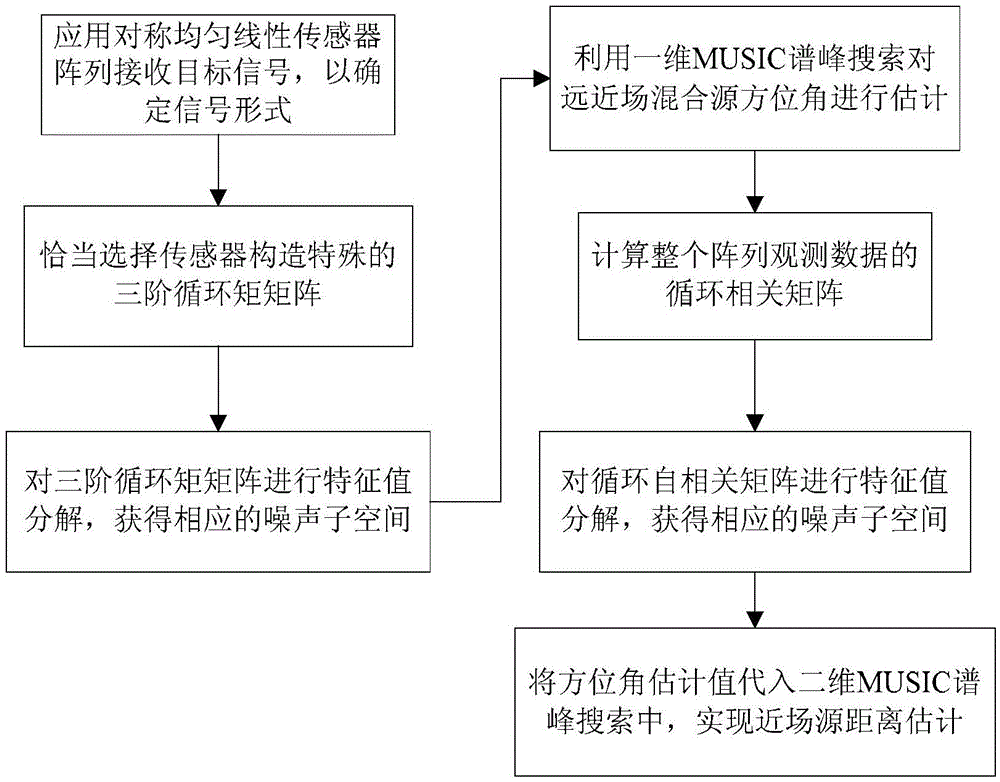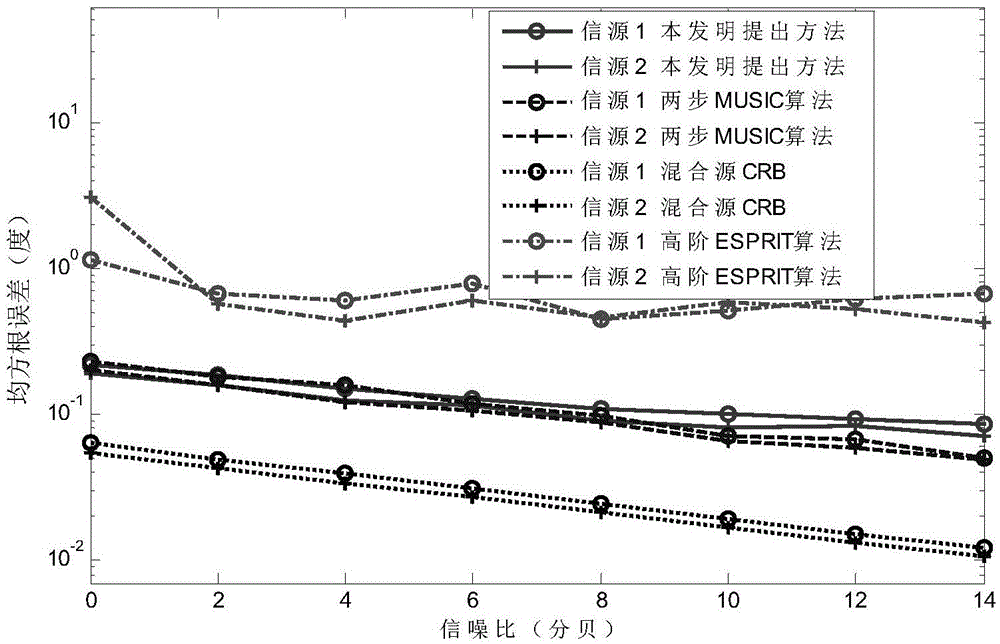Multi-objective near-and-far field mixed source positioning method
A source location, multi-target technology, applied in the field of multi-target far and near-field mixed source location, can solve the problems of high computational complexity, poor anti-interference ability and noise robustness
- Summary
- Abstract
- Description
- Claims
- Application Information
AI Technical Summary
Problems solved by technology
Method used
Image
Examples
Embodiment Construction
[0072] Include the following steps:
[0073] Step 1: Use a symmetrical uniform linear sensor array to receive the target signal, and determine the form of the far-near field mixed source observation signal;
[0074] Suppose M (including M 1 near-field sources and M-M 1 far-field sources) uncorrelated signal sources are incident on a symmetrical uniform linear array composed of L=2N+1 sensors, where d is the array element spacing and is equal in length, and array element 0 is used as a reference array element, then the lth The received signals of (1≤l≤L) sensors at time t can be expressed as
[0075]
[0076] where x l (t) is the sensor observation signal, s m (t) is the far-field source or near-field source envelope, n l (t) is the additive background noise of the sensor, M is the number of sources, is the angular frequency of the source signal, τ lm is the time delay difference from the reference array element to the lth sensor from the source m (1≤m≤M);
[0077] ...
PUM
 Login to View More
Login to View More Abstract
Description
Claims
Application Information
 Login to View More
Login to View More - R&D
- Intellectual Property
- Life Sciences
- Materials
- Tech Scout
- Unparalleled Data Quality
- Higher Quality Content
- 60% Fewer Hallucinations
Browse by: Latest US Patents, China's latest patents, Technical Efficacy Thesaurus, Application Domain, Technology Topic, Popular Technical Reports.
© 2025 PatSnap. All rights reserved.Legal|Privacy policy|Modern Slavery Act Transparency Statement|Sitemap|About US| Contact US: help@patsnap.com



